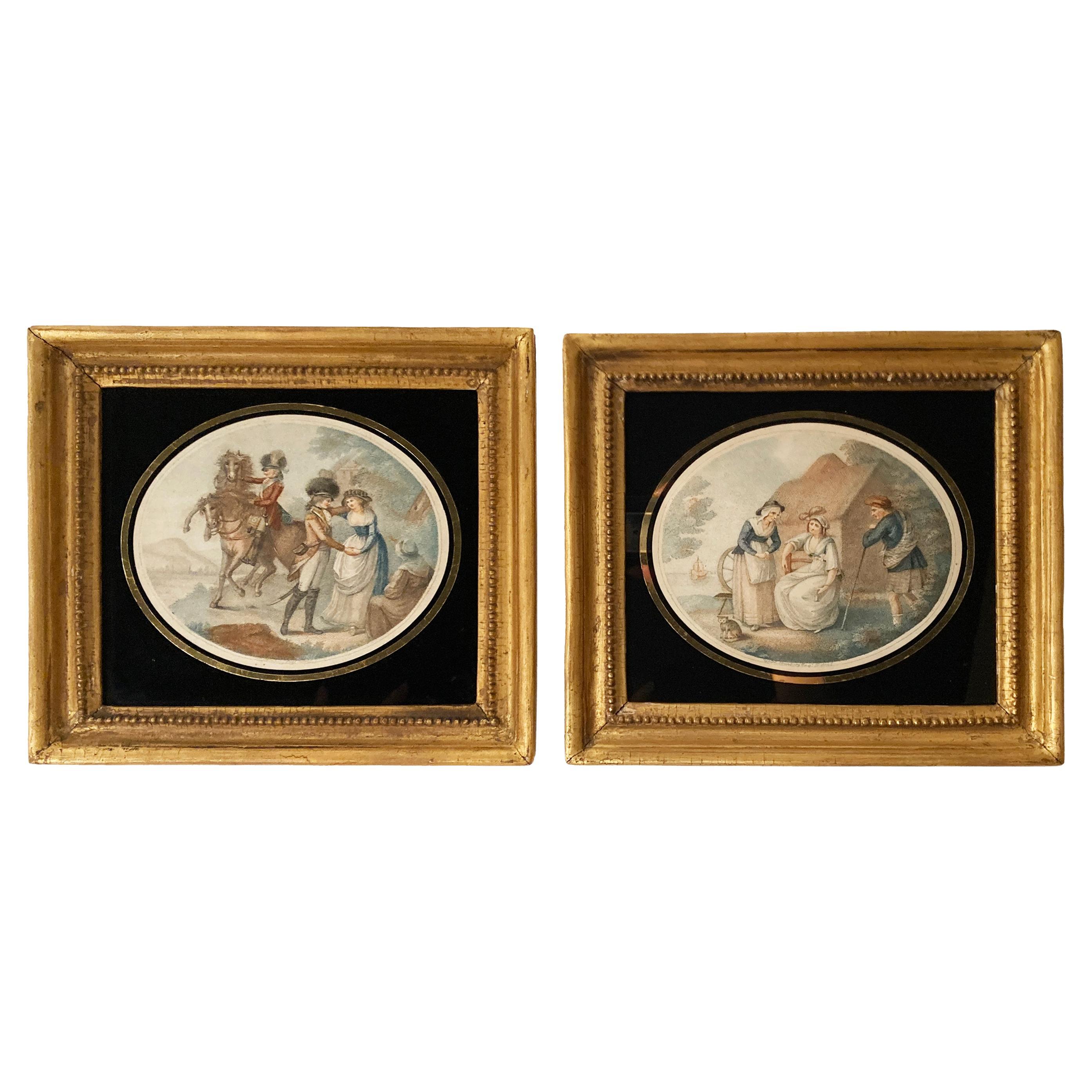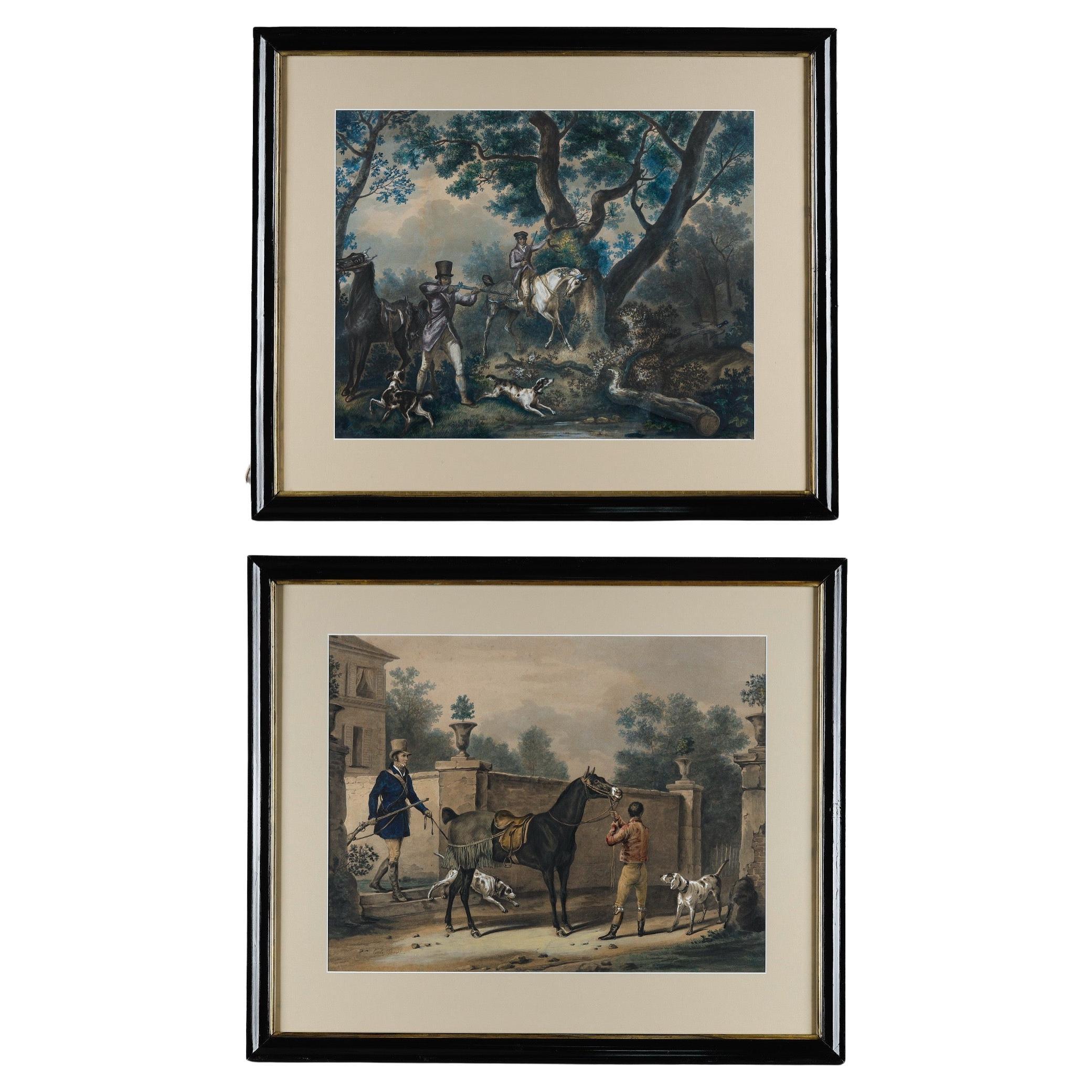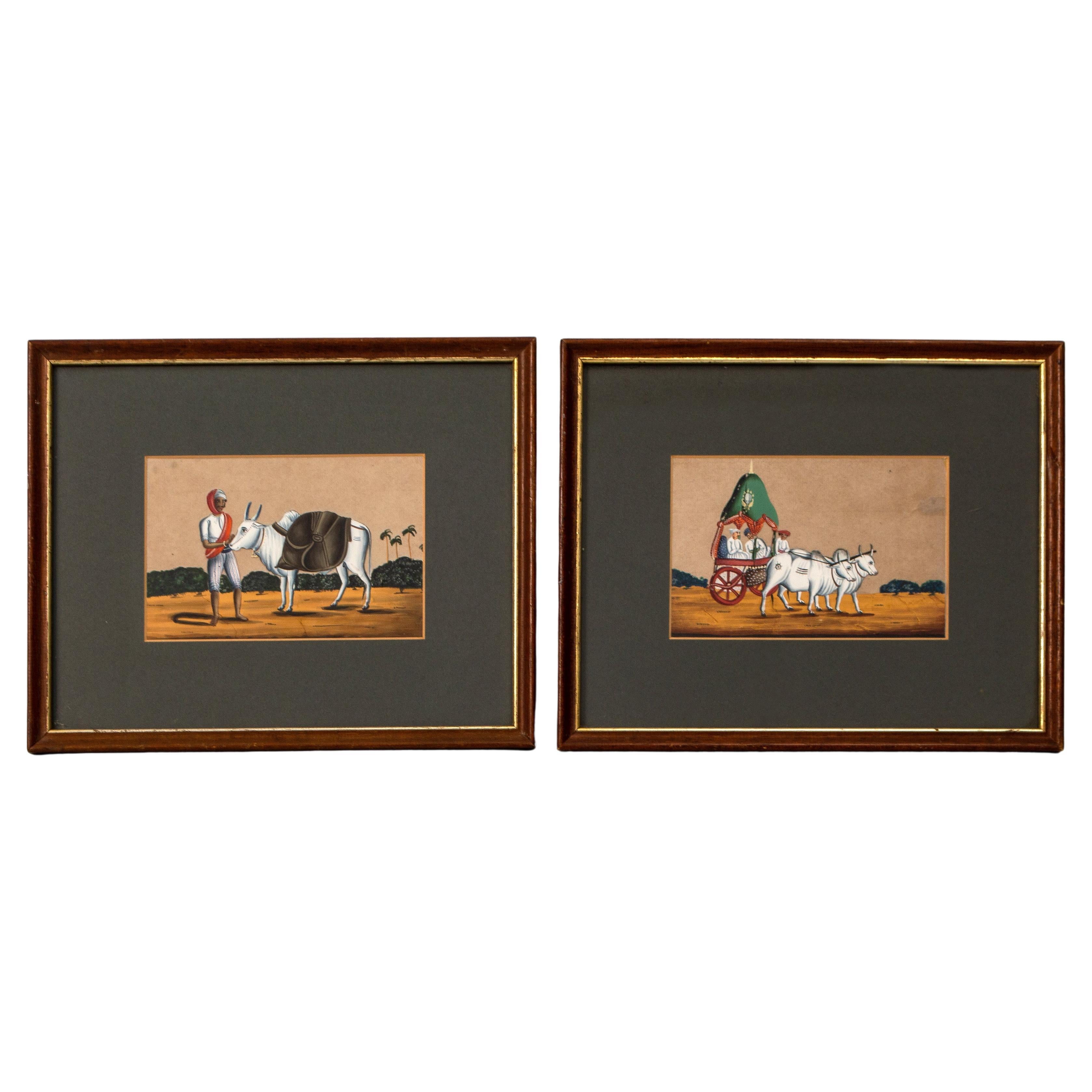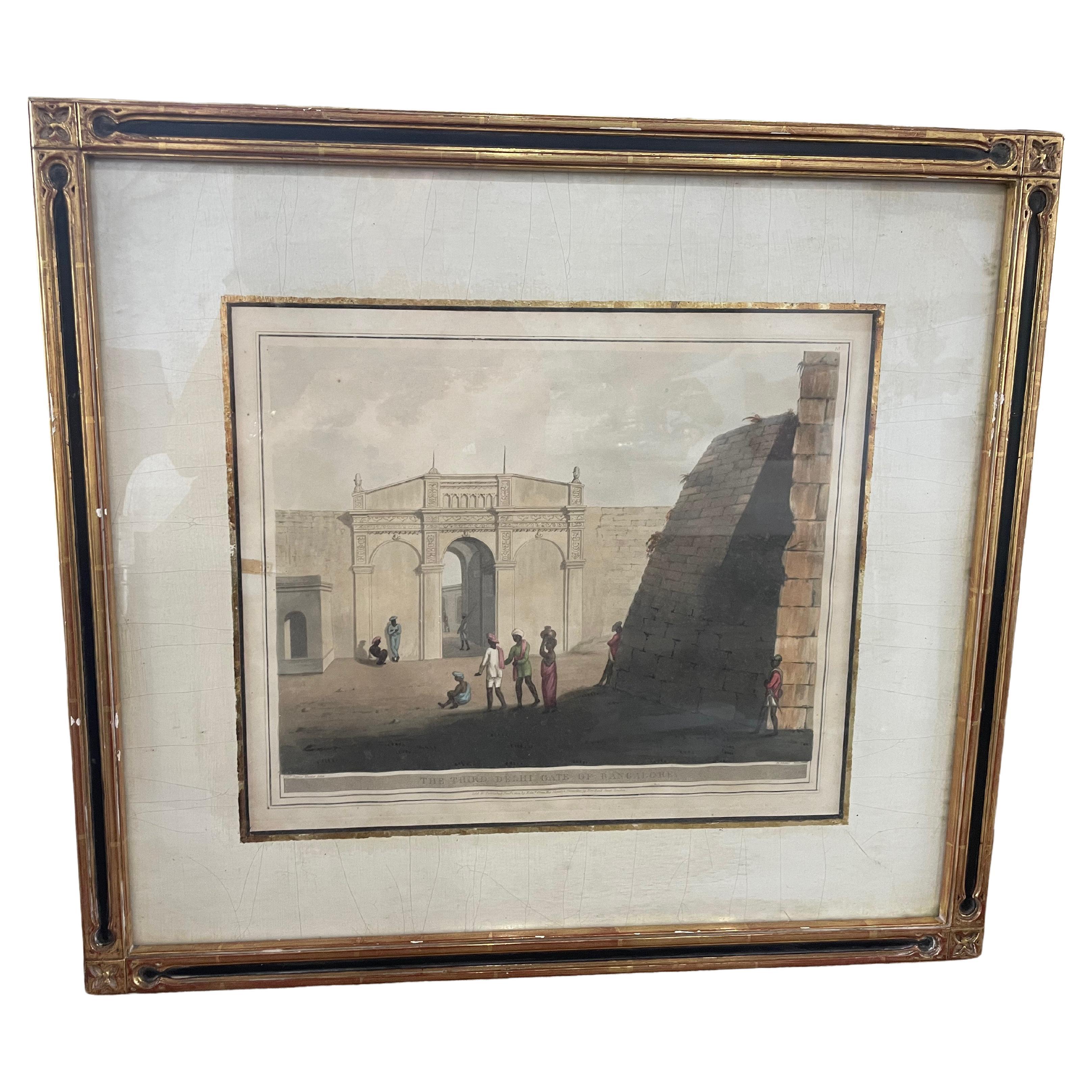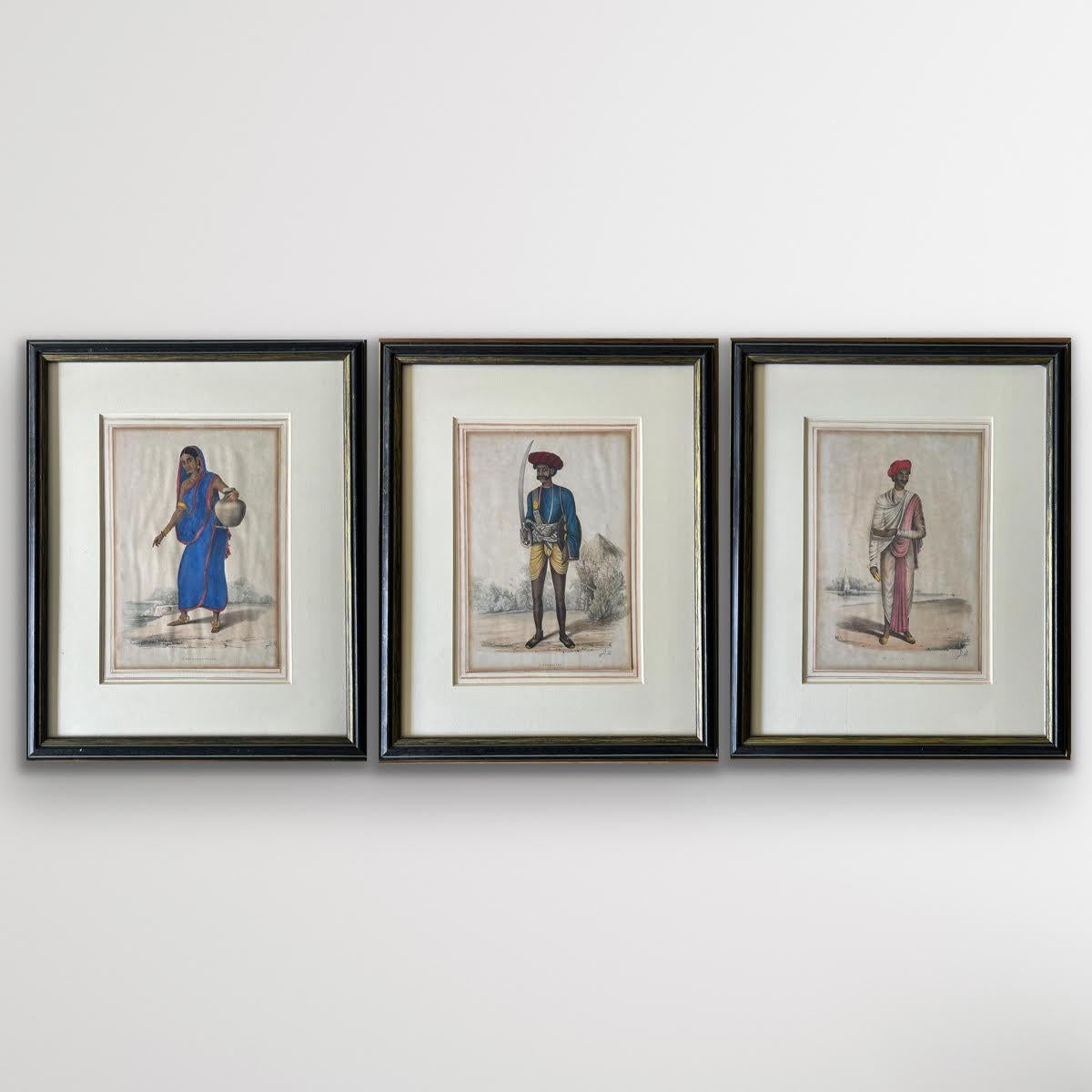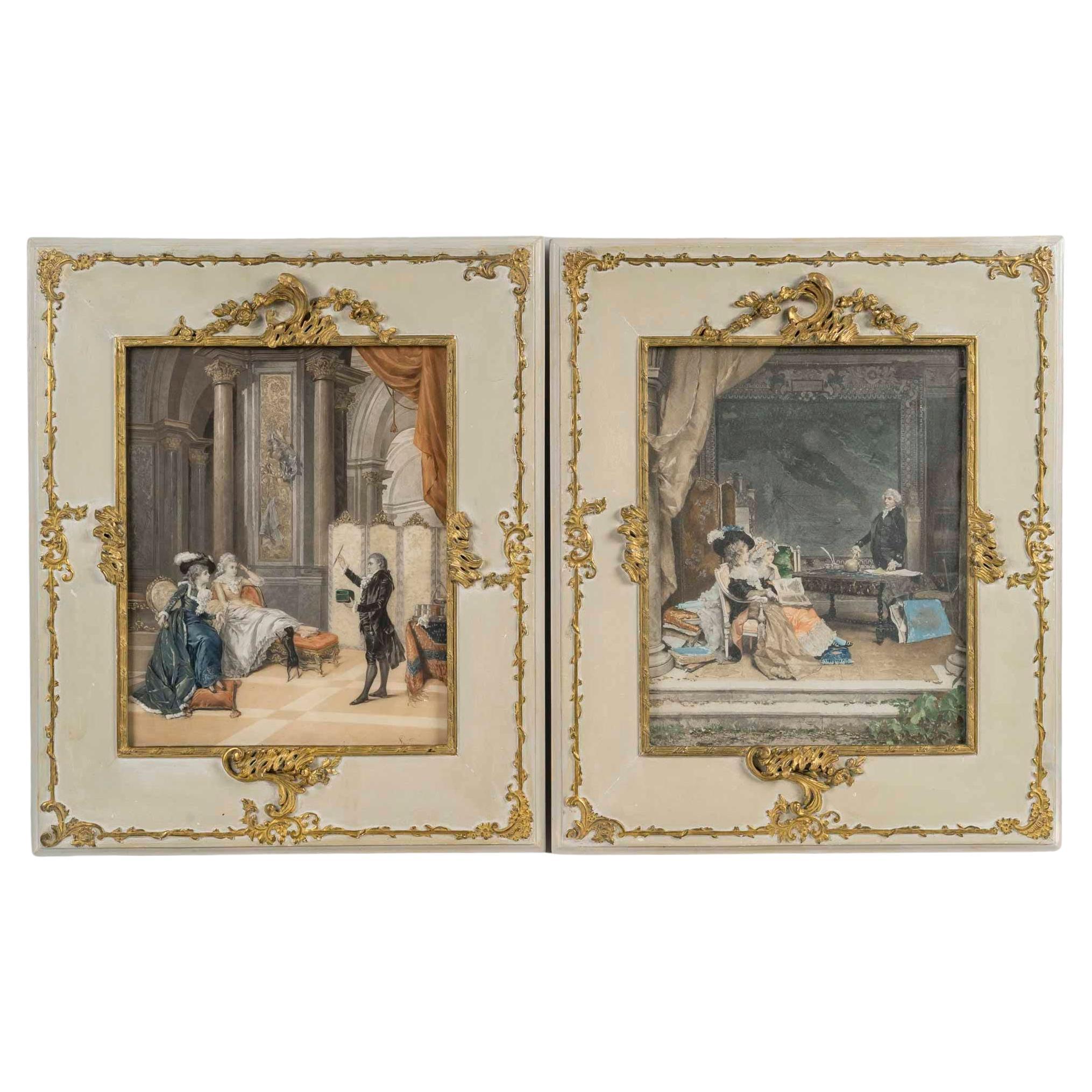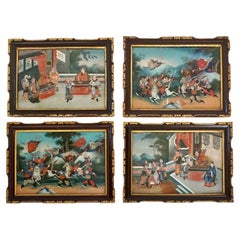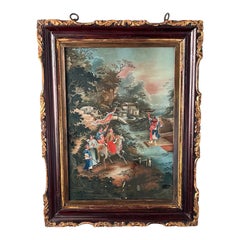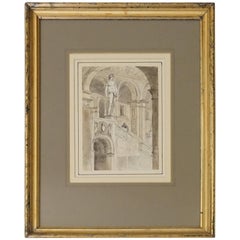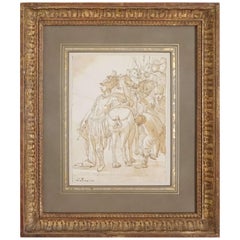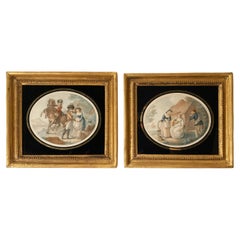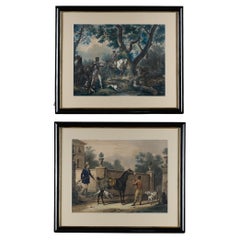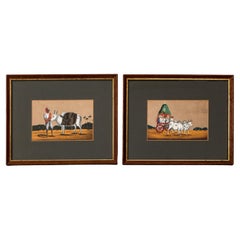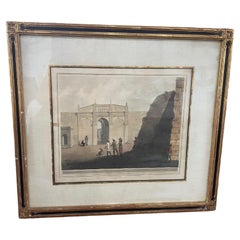Artículos similares a Anglo-Indian Company School Suttee Watercolour Paintings, C. 1810
¿Quieres más imágenes o vídeos?
Solicita imágenes o vídeos adicionales al vendedor
1 de 16
Anglo-Indian Company School Suttee Watercolour Paintings, C. 1810
10.861,06 €por juego
Envío
Recuperando presupuesto…La promesa de 1stDibs
Garantía de autenticidad,
Garantía de devolución de dinero,
Cancelación dentro de las 24 horas
Acerca del artículo
A wonderful and singular set of two early 19th century Anglo-Indian Company School watercolour paintings, likely Murshidabad, depicting 'Sati' or 'Suttee', the historical practice in which a widow sacrifices herself by sitting atop her deceased husband's funeral pyre, and the procession to the pyre. The reverses labeled "From an album of watercolours and drawings belonging to Eliza Frederica Salmon and possibly her sister Mary Salmon, daughter of William Orton Salmon who served in India circa 1800-1824." Works measure 9" x 7" and are presented French matted in giltwood molded frames with beaded inner borders.
'Company School' is a style of miniature painting that developed in India in the second half of the 18th century in response to the tastes of the British serving with the East India Company. The style first emerged in Murshidabad, West Bengal, and then spread to other centres of British trade: Benares (Varanasi), Delhi, Lucknow, and Patna. The paintings were executed in watercolours on paper, ivory, and mica. Favourite subjects were scenes of Indian daily life, local rulers, and sets of festivals and ceremonies, in line with the “cult of the picturesque” then current in British artistic circles.
The 'Company School' artistic movement left an indelible mark on the Indian art scene, influencing subsequent generations of artists and shaping the way one perceives and appreciate art in India. The artists combined European techniques such as perspective and shading with traditional Indian styles, resulting in a distinctive fusion of artistic traditions. One of the key legacies of the Company Style is its documentation of Indian history, culture, and society during a significant period of colonial rule. The paintings provide a visual narrative of the people, landscapes, and customs of the time, offering valuable insights into the diverse fabric of Indian life. They capture the essence of a bygone era, preserving a visual record that helps one understand and appreciate the cultural heritage brought in with the emergence of Company rule in India. Furthermore, the Company Style played a crucial role in bridging the gap between Indian and European artistic traditions. By blending elements from both cultures, the paintings fostered cross-cultural dialogue and exchange. They introduced Indian aesthetics to European audiences and influenced the development of Orientalist art in the West. Similarly, the Company Style also introduced European techniques and perspectives to Indian artists, inspiring them to experiment and evolve their own artistic practices. The legacy of the Company Style of Paintings can be seen in contemporary Indian art, where the fusion of diverse influences continues to thrive. Many artists today draw inspiration from the Company painters, combining traditional techniques with modern approaches to create unique and engaging works of art. This enduring legacy ensures that the Company Style remains an important part of India's artistic heritage, reminding one today of the transformative power of cultural exchange and the beauty that emerges when different artistic traditions converge. The arrival of photography was a direct blow for the style, but it survived into the 20th century, Ishwari Prasad of Patna, who died in 1950, being perhaps the last notable exponent. In the late 19th century the British established several Schools of Art, where a yet more Westernised version of the style was taught, later in competition with other styles.
- Dimensiones:Altura: 41,28 cm (16,25 in)Anchura: 45,72 cm (18 in)Profundidad: 2,88 cm (1,13 in)
- Se vende como:Juego de 2
- Estilo:Angloindio (Del período)
- Materiales y técnicas:
- Lugar de origen:
- Época:
- Fecha de fabricación:circa 1810
- Estado:Desgaste acorde con la edad y el uso.
- Ubicación del vendedor:Kinderhook, NY
- Número de referencia:1stDibs: LU1002137156252
Sobre el vendedor
5,0
Vendedor profesional aprobado
Todos los vendedores superan estrictas normas de autenticidad y confiabilidad
Establecido en 2012
Vendedor de 1stDibs desde 2013
151 ventas en 1stDibs
Tiempo de respuesta usual: <1 hora
- EnvíoRecuperando presupuesto…Envío desde: Kinderhook, NY
- Política de devolución
Partes de esta página se han traducido automáticamente. 1stDibs no puede garantizar la exactitud de las traducciones. El inglés es el idioma predeterminado de este sitio web.
Garantía de autenticidad
En el improbable caso de que haya algún problema con la autenticidad de un artículo, ponte en contacto con nosotros en un plazo de 1 año para recibir un reembolso total. DetallesGarantía de devolución de dinero
Si tu artículo no es como se describe, sufre daños durante el transporte o no llega, ponte en contacto con nosotros en un plazo de 7 días para recibir un reembolso total. DetallesCancelación dentro de las 24 horas
Tienes un período de gracia de 24 horas para reconsiderar tu compra, sin preguntas.Vendedores profesionales aprobados
Nuestros vendedores de primera clase deben cumplir estrictos estándares de servicio para mantener la integridad de nuestros anuncios.Garantía de igualación de precios
Si encuentras que un vendedor publicó el mismo artículo por un precio menor en otro lado, igualaremos ese precio.Entrega global de confianza
Nuestra red de transporte de primera ofrece opciones de envío especializado en todo el mundo, que incluye envío personalizado.Más de este vendedor
Ver todoPinturas chinas de exportación en vidrio invertido, conjunto de cuatro, hacia 1825
Conjunto de cuatro cuadros de cristal al revés policromados de exportación china de hacia 1825, compuestos por vistas figuradas de la corte y escenas de batallas, en marcos y respald...
Categoría
Antiguo, principios del siglo XIX, Chino, Exportación china, Pinturas
Materiales
Vidrio, Madera, Madera dorada, Laca, Pintura
Pintura china de exportación en vidrio invertido de guerreros en un paisaje, hacia 1825
Fino cuadro policromado de cristal al revés, de exportación china, de hacia 1825, que representa a un grupo de guerreros con caballo y un "Budai" en un paisaje fluvial, enmarcado en ...
Categoría
Antiguo, principios del siglo XIX, Chino, Exportación china, Pinturas y ...
Materiales
Vidrio, Madera, Madera dorada, Pintura
Dibujo arquitectónico a carboncillo y acuarela del Grand Tour, hacia 1800
Dibujo a carboncillo y acuarela del Grand Tour realizado por un turista inglés en Italia, hacia 1800, que representa a un caballero asomado a la balaustrada de una escalera en un int...
Categoría
Antiguo, principios del siglo XIX, Europeo, Grand Tour, Dibujos
Materiales
Vidrio, Madera, Papel
Dibujo de Jean-Baptiste Le Prince, 1760
Por Jean Baptist Le Prince
Dibujo a tinta negra y aguada sepia del artista francés Jean-Baptiste Le Prince de una escena clásica de soldados romanos con camello firmado y fechado abajo a la izquierda. Esta obr...
Categoría
Antiguo, mediados del siglo XVIII, Europeo, Dibujos
Materiales
Vidrio, Madera dorada, Papel
Cuadros ingleses de bodegones con incrustaciones "Boulle Work" de la Regencia, Pareja, hacia 1815
Maravillosa y rara pareja de bodegones ingleses de la Regencia de hacia 1815, "obra de boulle" o "obra de buhl", con marcos rectangulares lacados en negro con reservas ovaladas e inc...
Categoría
Antiguo, principios del siglo XIX, Inglés, Regencia, Arte decorativo
Materiales
Chapado en plata, Latón, Cobre, Peltre
Óleo inglés de Caballo y mozo Atribuido a Ben Marshall, hacia 1805
Impresionante óleo sobre lienzo ecuestre inglés de hacia 1805, firmemente atribuido al destacado artista de finales del periodo georgiano Benjamin Marshall, que representa a un cabal...
Categoría
Antiguo, principios del siglo XIX, Inglés, Regencia, Pinturas
Materiales
Madera dorada, Lienzo
También te puede gustar
Grabados en color de finales del siglo XVIII según originales del artista Henry William
Por Henry William Bunbury
Se trata de grabados en color excepcionalmente RAROS realizados a partir de originales del artista Henry William Bunbury (1750-1811) y grabados por Francesco Bartolozzi. Ambas impres...
Categoría
Antiguo, finales del siglo XVIII, Inglés, Georgiano, Impresiones
Materiales
Vidrio, Madera dorada, Papel
Dos grabados en color realzados con gouache, firmados Carle Vernet
Por Carle Vernet (Antoine Charles Horace Vernet)
El primer grabado representa una escena de caza del siglo XIX, con un grupo de hombres elegantemente vestidos, acompañados de perros y caballos, que se desplazan por un paisaje fores...
Categoría
Antiguo, Década de 1830, Francés, Carlos X, Dibujos
Materiales
Papel
Pareja de pinturas indias antiguas en miniatura de mica del siglo XIX C.1830
Pareja de pinturas indias antiguas en miniatura de mica del siglo XIX C.1830
Escuela de la Compañía India
Un par de pinturas al gouache sobre mica ...
Categoría
Antiguo, siglo XIX, Indio, Pinturas
Materiales
Papel
Impresiones artísticas del teniente James Hunter-India 'Conjunto de 4'
Estos grabados de mediados del siglo XVIII, pintados originalmente por el oficial militar y artista británico Lt. James Hunter durante su servicio en la India, representan imágenes d...
Categoría
Antiguo, finales del siglo XVIII, Británico, Angloindio, Impresiones
Materiales
Papel
India Litografías coloreadas a mano de principios del siglo XIX Rara Fanny Parks
Tres litografías coloreadas a mano de:
Fanny Parks (1794-1875)
Andanzas de un Peregrino, en busca de Lo Pintoresco, Durante cuatro y veinte años en Oriente con, Revelaciones de la ...
Categoría
Década de 1850, Otro estilo de arte, Impresiones figurativas
Materiales
Papel, Litografía, Pigmento
Pareja de acuarelas sobre papel, bien enmarcadas, Siglo XIX.
Pareja de acuarelas sobre papel, bien enmarcadas, siglo XIX.
Pareja de acuarelas sobre papel, firmadas, siglo XIX, bien enmarcadas en un marco de madera tallada y estuco dorado, sig...
Categoría
Antiguo, siglo XIX, Francés, Napoleón III, Pinturas
Materiales
Papel
